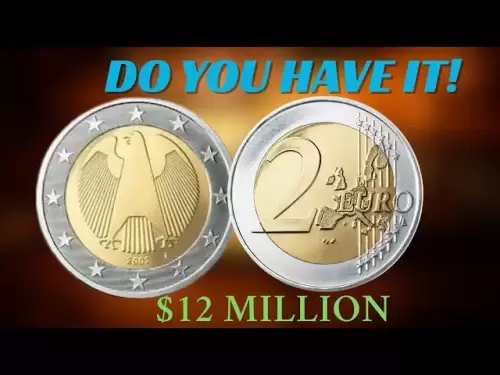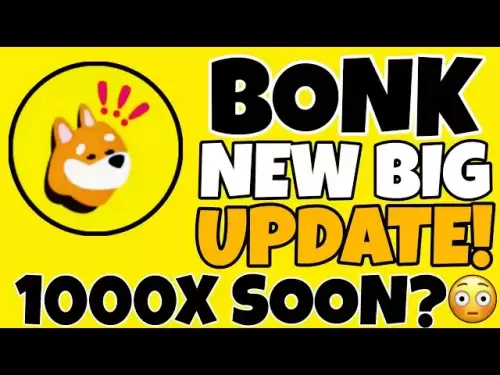-
 Bitcoin
Bitcoin $118400
0.39% -
 Ethereum
Ethereum $3814
2.17% -
 XRP
XRP $3.547
1.34% -
 Tether USDt
Tether USDt $1.000
0.00% -
 BNB
BNB $769.5
2.95% -
 Solana
Solana $191.7
6.36% -
 USDC
USDC $0.9999
0.01% -
 Dogecoin
Dogecoin $0.2722
7.75% -
 Cardano
Cardano $0.8995
5.59% -
 TRON
TRON $0.3158
-0.78% -
 Hyperliquid
Hyperliquid $47.37
4.46% -
 Stellar
Stellar $0.4848
3.54% -
 Sui
Sui $4.031
1.72% -
 Chainlink
Chainlink $20.11
3.94% -
 Hedera
Hedera $0.2832
3.16% -
 Avalanche
Avalanche $26.20
4.27% -
 Bitcoin Cash
Bitcoin Cash $530.5
0.67% -
 Shiba Inu
Shiba Inu $0.00001568
3.59% -
 Litecoin
Litecoin $118.4
1.42% -
 UNUS SED LEO
UNUS SED LEO $8.976
-0.23% -
 Toncoin
Toncoin $3.349
2.54% -
 Polkadot
Polkadot $4.590
2.54% -
 Uniswap
Uniswap $10.56
-0.59% -
 Ethena USDe
Ethena USDe $1.001
0.00% -
 Monero
Monero $327.7
0.39% -
 Pepe
Pepe $0.00001422
2.62% -
 Bitget Token
Bitget Token $4.973
-1.22% -
 Dai
Dai $1.000
0.02% -
 Aave
Aave $331.9
1.59% -
 Bittensor
Bittensor $429.6
-0.56%
What is the difference between BNB limit order and market order?
BNB market orders execute instantly at current prices, ideal for quick trades, while limit orders offer price control but no execution guarantee.
Apr 21, 2025 at 03:43 am
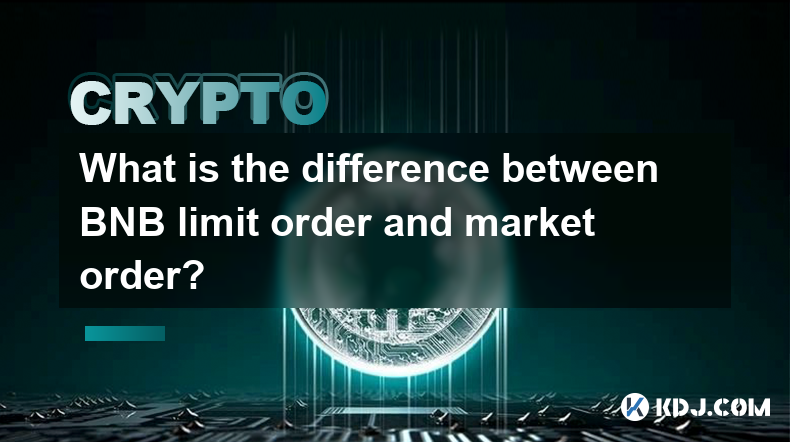
In the world of cryptocurrency trading, understanding the difference between a BNB limit order and a market order is crucial for effective trading on the Binance platform. Both types of orders serve different purposes and are used under different circumstances. This article will delve into the specifics of each, helping you understand when and how to use them effectively.
What is a BNB Market Order?
A market order is an order to buy or sell BNB at the current best available market price. When you place a market order, the transaction is executed immediately at the prevailing market rate. This type of order is ideal for traders who prioritize speed and want to enter or exit a position quickly.
- Execution Speed: Market orders are executed almost instantly, making them suitable for traders who need to act fast.
- Price Certainty: While the execution is guaranteed, the exact price at which the order is filled may vary slightly due to market fluctuations.
- Liquidity: Market orders rely on the available liquidity in the order book. In highly liquid markets, the impact on the price is minimal, but in less liquid markets, the price can move significantly.
What is a BNB Limit Order?
A limit order, on the other hand, allows you to set a specific price at which you want to buy or sell BNB. The order will only be executed if the market reaches your specified price. This type of order is useful for traders who want more control over the price at which they trade.
- Price Control: With a limit order, you can set the exact price at which you are willing to buy or sell, giving you more control over your trades.
- Execution Uncertainty: Unlike market orders, limit orders are not guaranteed to be executed. If the market does not reach your specified price, the order will remain pending until it is either filled or canceled.
- Partial Fills: In some cases, a limit order may be partially filled if there is not enough liquidity at your specified price. The remaining portion of the order will stay active until it is either filled or canceled.
When to Use a BNB Market Order
Market orders are best used in situations where speed is more important than the exact price of execution. Here are some scenarios where a market order might be appropriate:
- Breaking News: If there is breaking news that could significantly impact the price of BNB, you might want to enter or exit a position quickly to capitalize on the news.
- High Liquidity: In a highly liquid market, the price impact of a market order is minimal, making it a safe choice for quick trades.
- Closing Positions: If you need to close a position quickly to manage risk or lock in profits, a market order can ensure immediate execution.
When to Use a BNB Limit Order
Limit orders are ideal for traders who want to set specific entry or exit points and are willing to wait for the market to reach those prices. Here are some scenarios where a limit order might be more suitable:
- Price Targets: If you have a specific price target in mind for buying or selling BNB, a limit order allows you to set that target and wait for the market to reach it.
- Avoiding Slippage: In volatile markets, using a limit order can help you avoid slippage, which is the difference between the expected price of a trade and the price at which the trade is executed.
- Trading Strategies: Limit orders are often used in more complex trading strategies, such as scalping or range trading, where precise entry and exit points are crucial.
How to Place a BNB Market Order on Binance
Placing a market order on Binance is straightforward. Here are the steps to follow:
- Log into Your Binance Account: Ensure you are logged into your Binance account and have sufficient funds or BNB in your wallet.
- Navigate to the BNB Trading Page: Go to the trading section of the Binance platform and select the BNB trading pair you want to trade.
- Select Market Order: On the trading interface, choose the "Market" order type.
- Enter the Amount: Input the amount of BNB you want to buy or sell.
- Review and Confirm: Double-check the details of your order, including the total cost or proceeds, and then click "Buy BNB" or "Sell BNB" to execute the order.
How to Place a BNB Limit Order on Binance
Placing a limit order on Binance involves a few more steps than a market order but is still relatively simple. Here's how to do it:
- Log into Your Binance Account: Make sure you are logged in and have the necessary funds or BNB in your wallet.
- Navigate to the BNB Trading Page: Go to the trading section and select the BNB trading pair you want to trade.
- Select Limit Order: On the trading interface, choose the "Limit" order type.
- Set the Price: Enter the specific price at which you want to buy or sell BNB.
- Enter the Amount: Input the amount of BNB you want to trade.
- Review and Confirm: Review the details of your order, including the total cost or proceeds, and then click "Buy BNB" or "Sell BNB" to place the order.
Key Differences Between BNB Market and Limit Orders
Understanding the key differences between market and limit orders can help you make more informed trading decisions. Here are the main distinctions:
- Execution: Market orders are executed immediately at the current market price, while limit orders are executed only when the market reaches the specified price.
- Price Control: Limit orders give you control over the price at which you trade, whereas market orders do not.
- Certainty: Market orders guarantee execution but not the exact price, while limit orders guarantee the price but not the execution.
- Liquidity Impact: Market orders can impact the market price, especially in less liquid markets, while limit orders add liquidity to the order book.
Frequently Asked Questions
Q: Can I cancel a BNB limit order if it hasn't been filled yet?
A: Yes, you can cancel a BNB limit order at any time before it is filled. To do this, go to the "Open Orders" section on Binance, find your limit order, and click the "Cancel" button next to it.
Q: What happens if my BNB limit order is only partially filled?
A: If your BNB limit order is only partially filled, the remaining portion of the order will stay active until it is either filled or canceled. You can choose to cancel the remaining part of the order if you no longer wish to trade at the specified price.
Q: Is there a fee difference between BNB market and limit orders on Binance?
A: The fees for BNB market and limit orders on Binance are the same and depend on your trading volume and whether you are using BNB to pay for fees. However, the actual cost of the trade can vary due to the execution price of market orders.
Q: Can I use both market and limit orders in the same trading strategy?
A: Yes, many traders use a combination of market and limit orders in their trading strategies. For example, you might use a limit order to enter a position at a specific price and a market order to exit quickly if the market moves in your favor.
Disclaimer:info@kdj.com
The information provided is not trading advice. kdj.com does not assume any responsibility for any investments made based on the information provided in this article. Cryptocurrencies are highly volatile and it is highly recommended that you invest with caution after thorough research!
If you believe that the content used on this website infringes your copyright, please contact us immediately (info@kdj.com) and we will delete it promptly.
- Saylor, Trump, and Bitcoin: A New York Minute on Crypto's Power Trio
- 2025-07-22 00:50:12
- Strategy, Bitcoin, and $122,000: A New York Minute on Crypto's Latest Moves
- 2025-07-22 00:50:12
- BitMart, Pudgy Penguins, and the Web3 Ecosystem: A New York State of Mind
- 2025-07-22 00:30:13
- Ether Machine's NASDAQ Ambition: A $1.5 Billion Ethereum Play?
- 2025-07-22 00:30:13
- AVAIL, VENOM, Token Release Mania: What You Need to Know, New Yorker Style
- 2025-07-21 23:30:13
- Crypto Purchases: Your No-Stress Guide to Spending Digital Dough
- 2025-07-21 22:50:13
Related knowledge
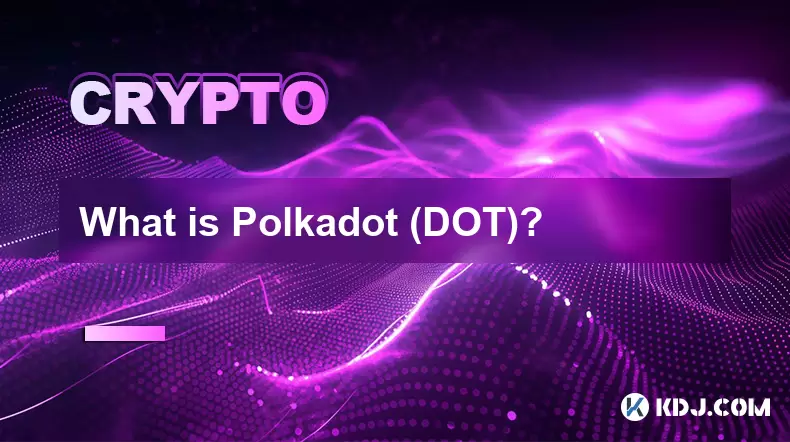
What is Polkadot (DOT)?
Jul 19,2025 at 06:35pm
Understanding the Basics of Polkadot (DOT)Polkadot (DOT) is a multi-chain network protocol designed to enable different blockchains to transfer messag...

What is Monero (XMR)?
Jul 21,2025 at 10:07am
What is Monero (XMR)?Monero (XMR) is a decentralized cryptocurrency designed to provide enhanced privacy and anonymity for its users. Unlike Bitcoin a...

How to add indicators to Ethereum chart on TradingView?
Jul 19,2025 at 07:15am
What Is an Ethereum Chart on TradingView?The Ethereum chart on TradingView is a visual representation of the price movement of Ethereum (ETH) over a s...
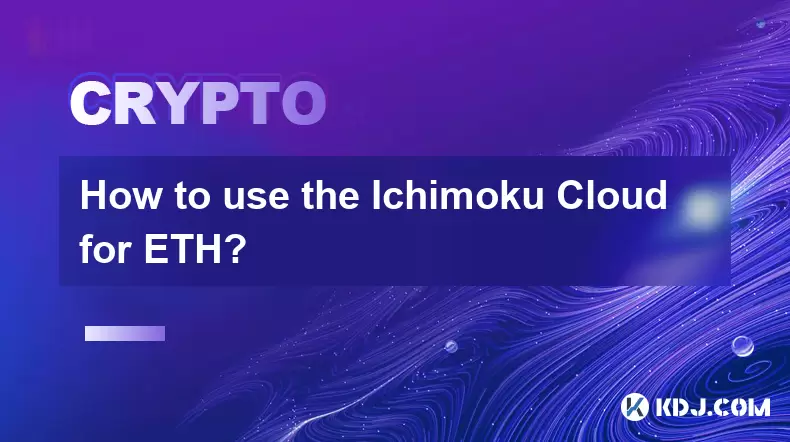
How to use the Ichimoku Cloud for ETH?
Jul 18,2025 at 09:56pm
Understanding the Ichimoku Cloud and Its ComponentsThe Ichimoku Cloud, also known as Ichimoku Kinko Hyo, is a versatile technical analysis tool that p...
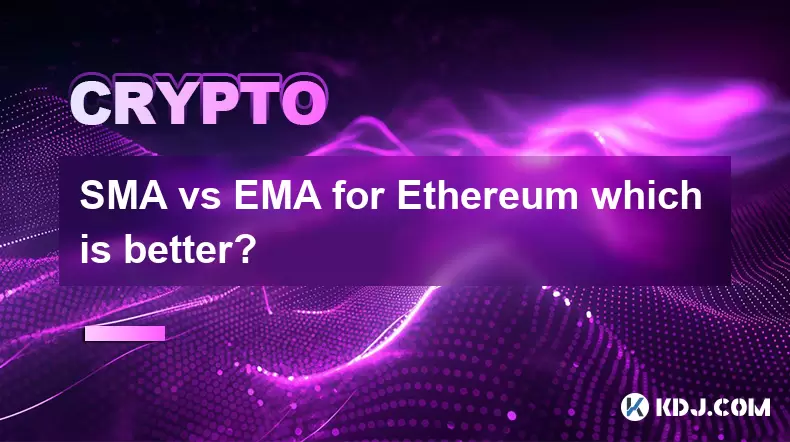
SMA vs EMA for Ethereum which is better?
Jul 19,2025 at 12:36am
Understanding the Basics of SMA and EMAIn the world of cryptocurrency trading, especially when dealing with Ethereum, technical indicators play a cruc...
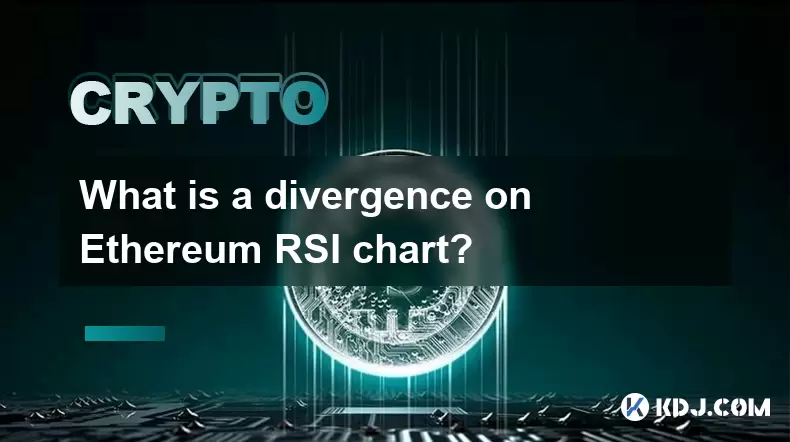
What is a divergence on Ethereum RSI chart?
Jul 21,2025 at 08:00am
Understanding the RSI IndicatorThe Relative Strength Index (RSI) is a momentum oscillator used in technical analysis to measure the speed and change o...

What is Polkadot (DOT)?
Jul 19,2025 at 06:35pm
Understanding the Basics of Polkadot (DOT)Polkadot (DOT) is a multi-chain network protocol designed to enable different blockchains to transfer messag...

What is Monero (XMR)?
Jul 21,2025 at 10:07am
What is Monero (XMR)?Monero (XMR) is a decentralized cryptocurrency designed to provide enhanced privacy and anonymity for its users. Unlike Bitcoin a...

How to add indicators to Ethereum chart on TradingView?
Jul 19,2025 at 07:15am
What Is an Ethereum Chart on TradingView?The Ethereum chart on TradingView is a visual representation of the price movement of Ethereum (ETH) over a s...

How to use the Ichimoku Cloud for ETH?
Jul 18,2025 at 09:56pm
Understanding the Ichimoku Cloud and Its ComponentsThe Ichimoku Cloud, also known as Ichimoku Kinko Hyo, is a versatile technical analysis tool that p...

SMA vs EMA for Ethereum which is better?
Jul 19,2025 at 12:36am
Understanding the Basics of SMA and EMAIn the world of cryptocurrency trading, especially when dealing with Ethereum, technical indicators play a cruc...

What is a divergence on Ethereum RSI chart?
Jul 21,2025 at 08:00am
Understanding the RSI IndicatorThe Relative Strength Index (RSI) is a momentum oscillator used in technical analysis to measure the speed and change o...
See all articles





















